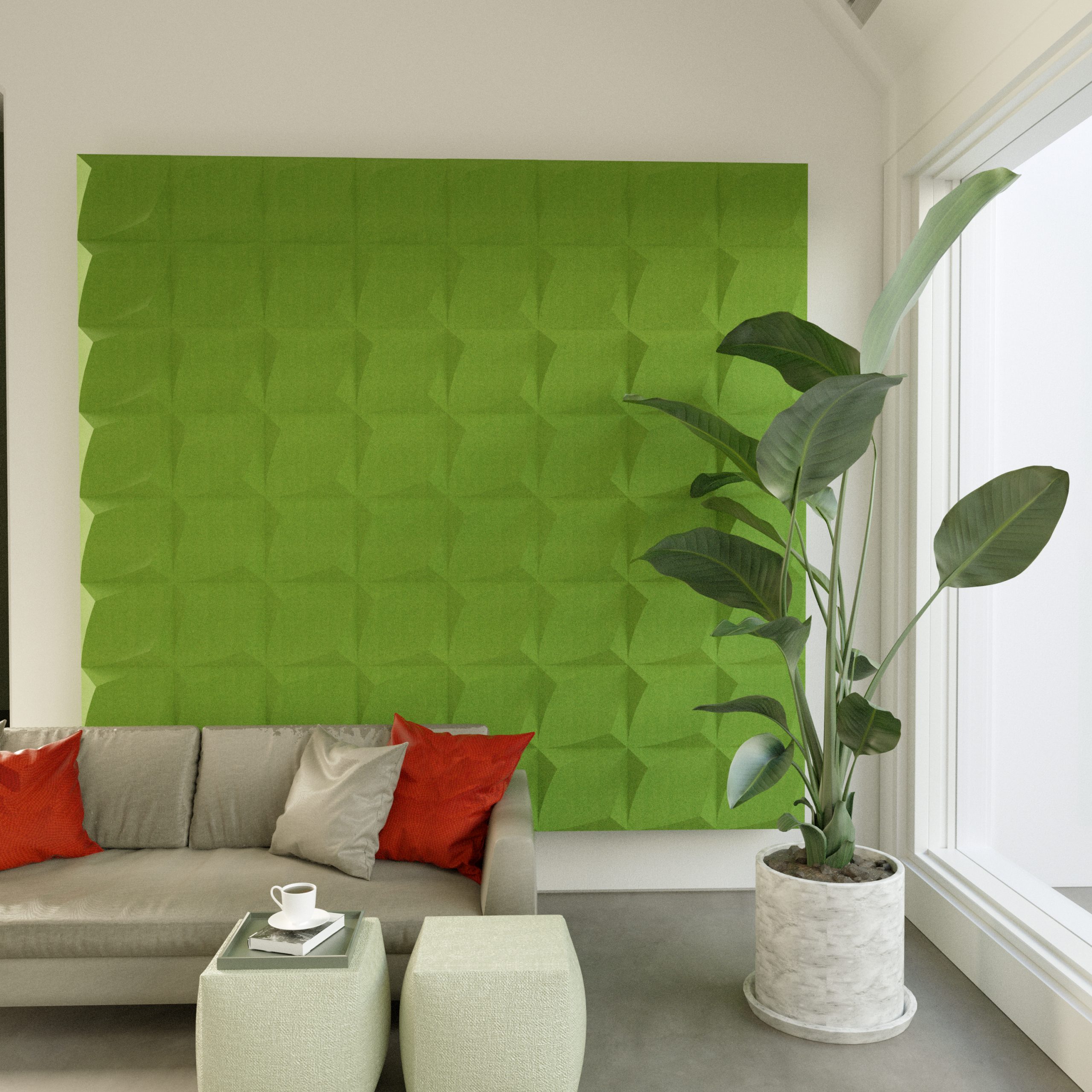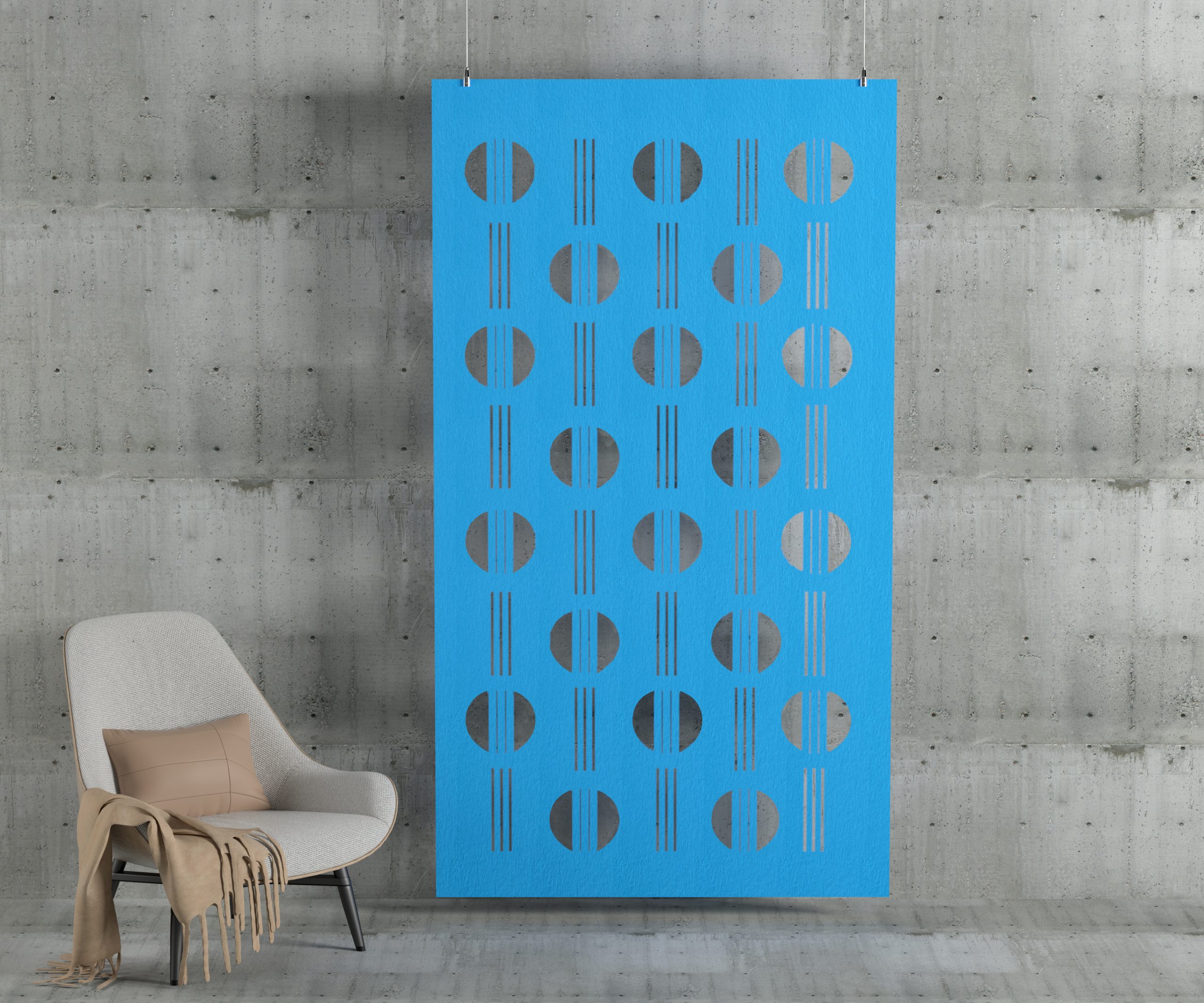
1. Why Installation Method Matters
When installing PET acoustic panels, the mounting method significantly influences acoustic performance. Even if two panels share the same thickness and material, their sound absorption results can differ depending on how they are mounted.
The two most common methods are direct mounting and air gap mounting—each with unique benefits and best-fit scenarios.
2. What Is Direct Mounting?
Direct mounting means fixing the panel flush against the wall or ceiling surface using adhesive, nails, or screws.
Advantages:
Sleek and minimal appearance
Space-saving design—ideal for smaller rooms
Easier, faster installation process
Limitations:
Lower low-frequency absorption (below 500Hz)
Slightly reduced overall NRC compared to panels with an air gap
Best for:
Meeting rooms, home offices, or spaces where aesthetics and compactness matter more than heavy-duty sound control.

3. What Is Air Gap Mounting?
Air gap mounting adds a space (typically 20–100mm) between the panel and the wall or ceiling. This air cavity improves sound absorption—especially at lower frequencies.
Advantages:
Better low-frequency performance
Can achieve up to 0.1–0.2 NRC improvement
Effective for large or reverberant spaces
Limitations:
Slightly more complex installation
Consumes extra wall or ceiling depth
Best for:
Recording studios, open offices, classrooms, and auditoriums—anywhere where echo control and speech clarity are critical.
4. How Does Air Gap Improve Performance?
The air gap acts as a secondary absorber. Sound waves penetrate the panel, then partially reflect off the wall behind it, losing more energy in the process.
In practical terms, a 25mm PET panel with a 50mm air gap can perform similarly to a 50mm thick directly mounted panel, offering greater absorption efficiency without extra material cost.
5. Recommended Configurations
| Panel Thickness | Air Gap | Typical NRC (EN ISO 354) | Mounting Type |
|---|---|---|---|
| 9mm PET Panel | 0mm | 0.45–0.55 | Direct Mount |
| 9mm PET Panel | 25mm | 0.65–0.75 | Air Gap |
| 12mm PET Panel | 0mm | 0.60–0.70 | Direct Mount |
| 12mm PET Panel | 50mm | 0.80–0.90 | Air Gap |
Note: Actual results may vary depending on density, mounting type (Type A or E per EN ISO 354), and installation quality.

6. Which Should You Choose?
Choose Direct Mounting if:
You need a seamless look and minimal wall projection.
The room mainly suffers from mid-to-high frequency reflections.
Choose Air Gap Mounting if:
You want maximum acoustic performance.
You’re treating large rooms or high-reverberation spaces.
7. Pro Tip for Installers
If you prefer a hybrid solution, try mounting furring strips behind your PET panels to create a small air gap (20–25mm).
This simple modification can noticeably boost acoustic performance without sacrificing aesthetics.
8. Conclusion
Both air gap and direct mounting methods are effective—your choice depends on your space, performance goals, and visual preferences.
For most general applications, an air gap of 25–50mm provides the best balance between acoustic efficiency and installation practicality.

